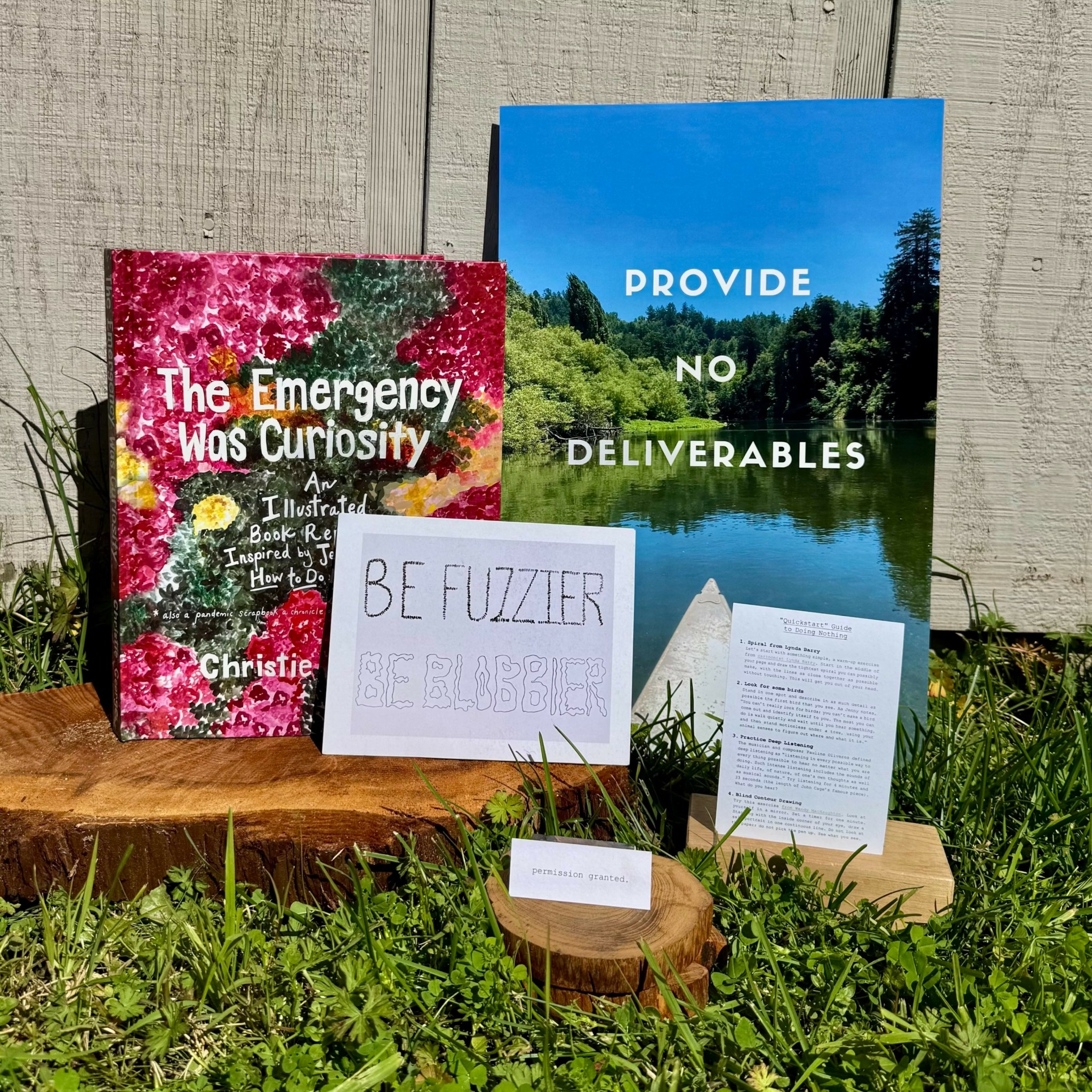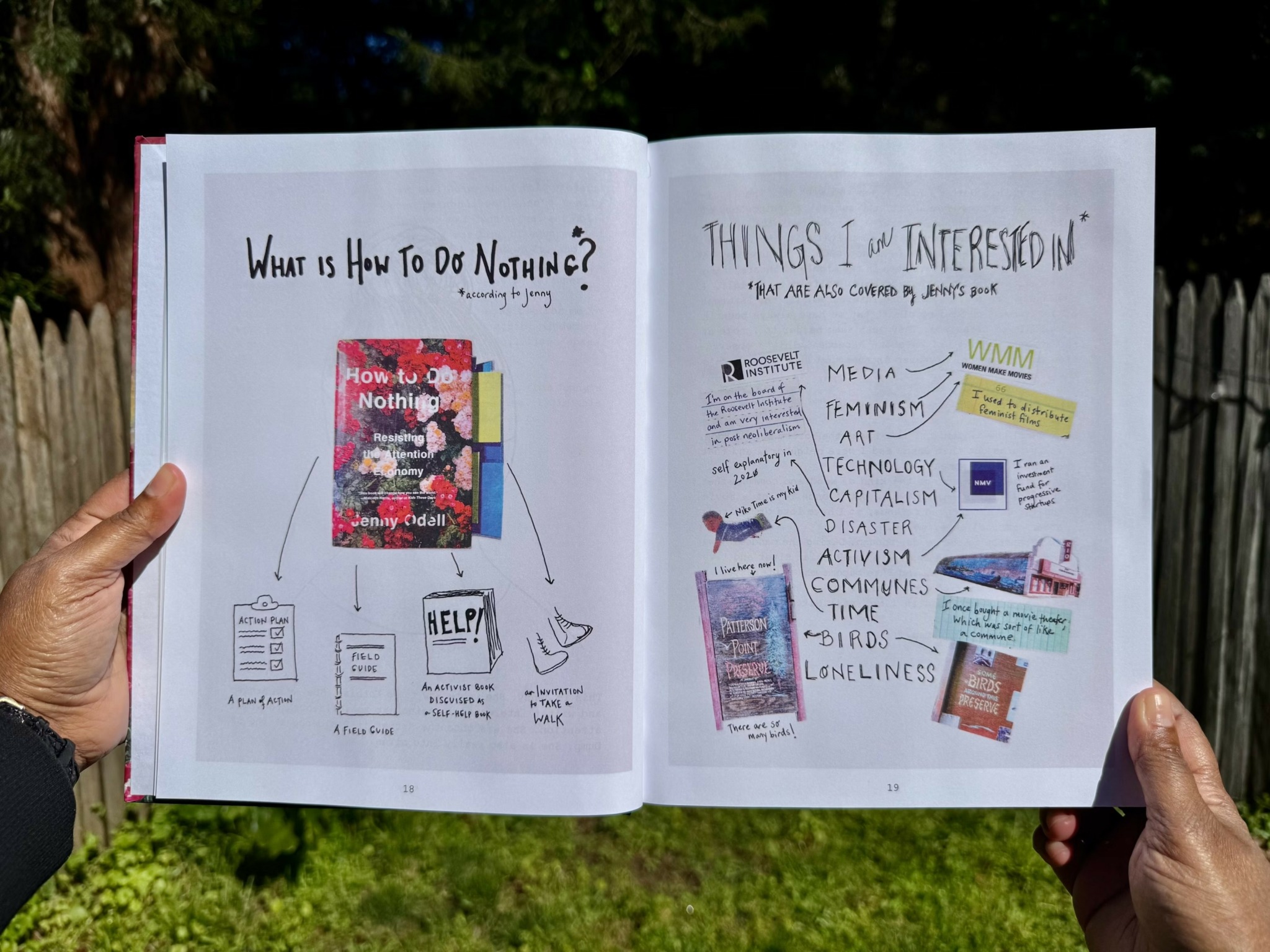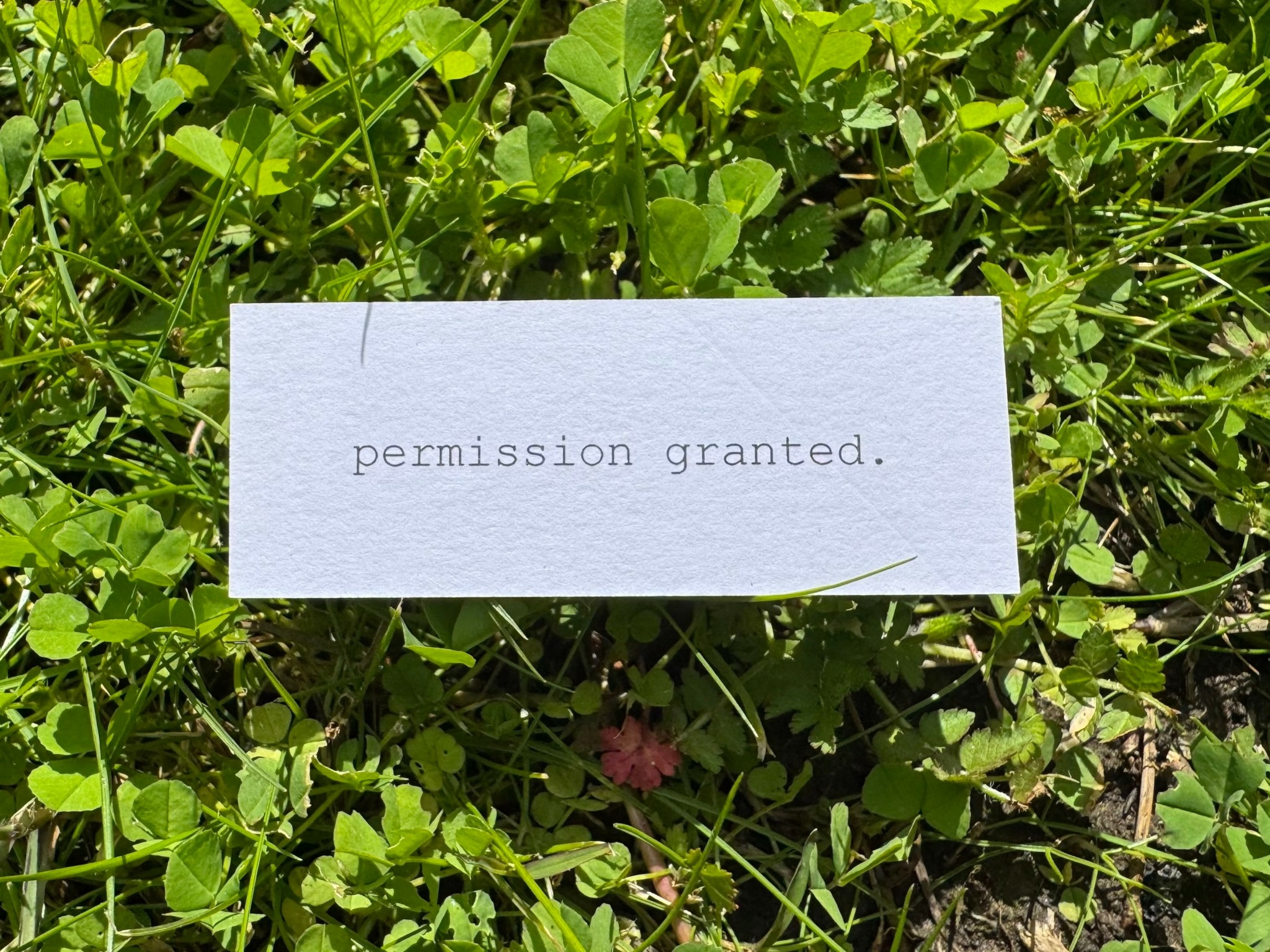We were lucky to catch up with Christie George recently and have shared our conversation below.
Christie, thanks for joining us, excited to have you contributing your stories and insights. Going back to the beginning – how did you come up with the idea in the first place?
I’m still working out which part of my creative life is a business and which part is a practice, but in both cases it feels like things really began in the summer of 2020. When the pandemic started, I had just left my job of 10 years running a small investment fund focused on media and political technology. I was taking a six-month sabbatical and planning to return to similar work. But I had time and space partly because of the pandemic and partly because of a fellowship that allowed me to do some writing and to explore ideas I hadn’t been able to when I was running an organization full time. I found myself returning to a book I had read the year before – Jenny Odell’s “How to Do Nothing” – and I was amazed at how relevant it was both to the pandemic and to my new life in the country (my family and I had moved out of Oakland to a small, rural town in northern California).
The book’s ideas felt so urgent and necessary, and I started copying quotes from the book that I wanted to remember. Eventually, I began doodling and making illustrations to accompany the quotes. Four years later, I had written, drawn and painted more than 200 pages by hand and turned all of these into what I call an illustrated “book report” and pandemic scrapbook. My initial plan was to print a copy for myself, one for Jenny and one for my parents. But the project has since evolved beyond my expectations, and I’m releasing the book in a limited edition through Metalabel.
I started this project only for myself, and I’m a big believer in doing projects with yourself as the audience in mind. At the time, this was an intuitive decision. In retrospect, I think this approach produces an authenticity that makes projects relatable and more compelling to other people as well. It’s the reception from other people – including receiving book reports about my book report and book reports about other books – that has motivated me to keep going with the project, wherever it may wander.

Christie, before we move on to more of these sorts of questions, can you take some time to bring our readers up to speed on you and what you do?
I fell into my current work somewhat accidentally after two decades of working in media – first as a film distributor then after business school as the head of an investment fund helping progressive startups get off the ground. Increasingly, I think the distinctions between my “previous” career and my current work are not as sharp as I initially thought. All the work informs each other. While my current work did begin as a detour – a personal creative response to another book – it is very much part of a through line of my career, which is elevating interesting and underrepresented voices through a variety of media forms.
More recently my interests have shifted toward content that is more tactile and interactive (zines! book reports!), toward more collaborative forms of sensemaking (eg collective writing) and new ways of gathering – particularly in person – in the long wake of the pandemic. I’ve started facilitating all sorts of interesting in-person events – silent book club, bird walks, office hours, workshops. These experiments are coalescing into a new body of work and an emerging community of thinkers and doers at The Togethering Lab.

For you, what’s the most rewarding aspect of being a creative?
This project has catalyzed for me an entirely new way of seeing myself as a creative person. Previously, I thought of myself as more of a producer – a facilitator, moderator and curator of other people’s ideas. No one asked for my project; it wasn’t commissioned. I did it for no other reason than that I wanted to. And this project – which started as a book and has evolved into an exhibition and an event series – has turned out to be the most meaningful project I’ve ever worked on. I have also learned that this project is a lot about permission, mostly the permission we give ourselves to work on things that inspire our curiosity. Sharing it publicly is a way for me to give permission to other people, a way of saying, “You can do this, too!” Although I initially made this project for myself, what has become most meaningful to me is how other people have responded to it and incorporated it into their own lives.

Looking back, are there any resources you wish you knew about earlier in your creative journey?
I wish I had understood the differences between trade publishing and independent publishing sooner. I talked to lots of authors and writers before publishing my project, but I wish I had realized sooner that most writers working in traditional media don’t know that much about the actual mechanics (print run estimates, budgets, promotional strategy) of producing and distributing physical books. Eventually, I found my way toward zine makers, small presses and art publishers, who are closer to the actual work of producing books, but I would have saved myself a lot of time and frustration going straight to them. Know what market you’re in even if it changes.
My strongest advice is to find a crew of people to support you through the highs and lows of creative work. In my case, I am part of a group of creatives who are also parents. We keep each other accountable to our creative practices/businesses and can always be counted on to be a sounding board for each other, to give feedback or to edit each other’s work. I highly recommend finding a crew of fellow creatives – it’s helpful on a practical level but also on a human level.
Contact Info:
- Website: https://www.christiemgeorge.com/
- Instagram: https://www.instagram.com/christiemgeorge/
- Linkedin: https://www.linkedin.com/in/christiemarygeorge/
- Other: https://lostseason.metalabel.com/emergency
https://linktr.ee/christiegeorge


Image Credits
Main Photo by Rob Villanueva, RVSF Inc.


